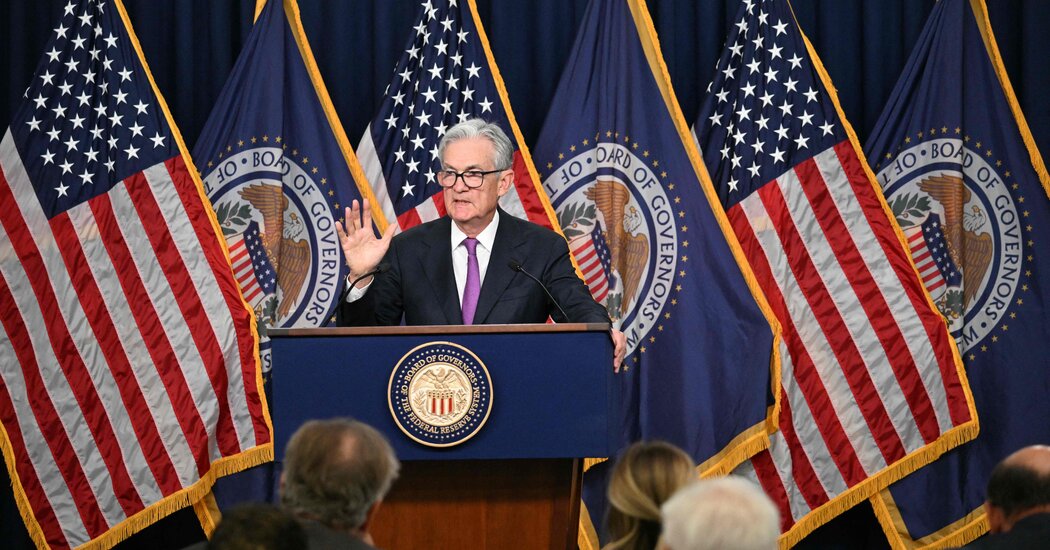Philip Meyer, Reporter Who Pioneered Data-Driven Journalism, Dies at 93
Philip Meyer, a former reporter who pioneered new ways to incorporate data, quantitative methods and computers into investigative journalism, died on Saturday at his home in Carrboro, N.C., a suburb of Chapel Hill. He was 93.
His daughter Melissa Meyer said the cause was complications of Parkinson’s disease.
With a career spanning the latter half of the 20th century and several years into the 21st, Mr. Meyer was at the center of a revolution within the craft and business of journalism — a revolution that, to a large degree, he helped shape.
When he began working as an assistant editor at The Topeka Daily Capital in Kansas in the mid-1950s, computers were room-size, turtle-speed contraptions, and reporting was done mostly through interviews, with the occasional trip to the library or the government records office.
Mr. Meyer was among the few reporters who saw the growing power of computers to crunch data and produce new insight into complex questions.
His breakthrough came in 1967, in the aftermath of the Detroit riot that summer. Mr. Meyer, by then a national correspondent for The Akron Beacon Journal in Ohio, had spent the previous year at Harvard on a Nieman fellowship for journalists, intending to study how pollsters used computers to manipulate data.
Instead, he realized the possibility of using computers in his own work. He took courses, learned code and even devoted time to using an IBM mainframe computer.
He went to The Detroit Free Press, which, like The Beacon Journal, was a Knight-Ridder paper, as a favor to the editor, who said that his own reporters were exhausted and he needed fresh bodies.
Mr. Meyer immediately seized on a claim, common in the news media, that the rioters had mostly been poor, uneducated Black migrants from the South. He gathered as much demographic data as he could, ran it through a computer and got a much different picture: The rioters were more likely to be locally born, and were spread evenly across the socioeconomic spectrum.
A year later, Mr. Meyer shared in the Pulitzer Prize for local general or spot news reporting, which went to The Detroit Free Press for its coverage of the riot.
That work earned Mr. Meyer national recognition as the leading thinker on bringing social-science methods into reporting. He summed up his approach in his book “Precision Journalism: A Reporter’s Introduction to Social Science Methods,” published in 1973 and today considered one of the most important books about reporting ever written.
“They are raising the ante on what it takes to be a journalist,” he wrote in his first chapter. Today, he said, “a reporter has to be a database manager, a data processor and a data analyst.”
Not everyone agreed. In the early 1970s, Mr. Meyer consulted with two investigative reporters at The Philadelphia Inquirer, Donald L. Barlett and James B. Steele, for a seven-part series analyzing whether judges were too lenient on violent offenders.
Many politicians said yes. But the trio, using a program Mr. Meyer wrote for a mainframe rented from a Maryland defense contractor, showed that the answer was conclusively no.
The series, “Crime and Injustice,” won several awards. But it was shut out from the Pulitzers, Mr. Steele said he was later told, by jurors who insisted that their work was not journalism.
“There was a lot of built-up resistance to something like that,” Mr. Steele said in a phone interview. “That didn’t seem like it was traditional reporting.”
That opposition weakened over time, as computers became central to daily life and reporters became comfortable with using data in a rigorous fashion, not as a replacement for traditional methods but as a supplement — a change instigated and guided by Mr. Meyer.
“One of the things that I think Phil did so well was help us eliminate the idea that there is a tension between narrative and deep, deep on-the-ground reporting and more disciplined — what he would call precision — journalism,” Sarah Cohen, a journalism professor at Arizona State University, said by phone. “That they can stand side by side and in the same pieces, and that each can be made stronger by the other.”
Philip Edward Meyer was born on Oct. 27, 1930, in Deshler, a small town in southeastern Nebraska, and grew up in and around Clay Center, Kan., across the border. His father, Elmer, owned a hardware store, and his mother, Hilda (Morrison) Meyer, was a teacher and grocery-store cashier.
Philip learned to cover issues in science and technology at Kansas State University and graduated in 1952 with a degree in technical journalism. He then spent two years in the Navy as a public-information officer.
He returned to Kansas in 1954 to work as an editor at The Topeka Daily Capital. He married Sue Quail, a fellow staff member at the paper, in 1956. She died in 2021.
Along with his daughter Melissa, Mr. Meyer is survived by two other daughters, Kathy Lucente and Sarah Meyer; a brother, John; eight grandchildren; and three great-grandchildren. Another daughter, Caroline Meyer, died in 2020.
Mr. Meyer received a master’s degree in political science from the University of North Carolina, Chapel Hill, in 1958. He and his family then moved to Miami, where he worked as an education reporter for The Miami Herald.
Four years later he became a Washington correspondent for The Akron Beacon Journal. He served as a national correspondent and director of news research for Knight-Ridder before joining the journalism faculty at Chapel Hill in 1981. He retired in 2008.
As a professor, he wrote widely on journalism ethics and the newspaper business. His book “The Vanishing Newspaper: Saving Journalism in the Information Age” (2004) predicted that the steady decline of newspapers would continue unless they found a new way to engage with audiences — a prediction that has been largely borne out.
He was equally prescient about the ways in which changes in the economic model of journalism shifted the boundaries around conversations about objectivity — a change he welcomed.
“As the audience fragments, trust is still important,” he wrote in USA Today in 2004. “But it should be based on getting the facts right, not on the pseudo-objectivity that comes from a journalist concealing his or her views.”


